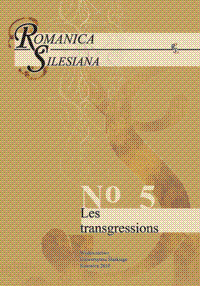Girlhood, Disability, and Liminality in Barbara Gowdy’s Mister Sandman
Girlhood, Disability, and Liminality in Barbara Gowdy’s Mister Sandman
Author(s): Anna CzarnowusSubject(s): Language and Literature Studies
Published by: Wydawnictwo Uniwersytetu Śląskiego
Keywords: Barbara Gowdy; Canadian novel in English; disability; body; gender
Summary/Abstract: Barbara Gowdy’s 1996 novel Mister Sandman centers on the mysteriously silent figure of Joan Cannary, a mentally disabled child who yet does not become a spectacle of the grotesque in the mode quite standard for representations of the disabled female figures, as Rosemarie Garland Thomson noticed in her magisterial study Extraordinary Bodies: Figuring Physical Disability in American Culture and Literature. In her disability Gowdy’s Joan does not constitute a metaphor of the condition of her family, either, despite the transgressions they are prone to devote themselves to. The novel offers an open-minded outlook on transgression as a means of liberating oneself from the social constraints and from the self-imposed limitations. Joan’s eternal girlhood makes her a lens for the family members’ tendency to transgress against the norms, which is ultimately received with affirmation. Her figure offers a valuable commentary on other texts by Gowdy, which present a discourse on the liminality of human body and on the boundaries of identity.
Journal: Romanica Silesiana
- Issue Year: 2010
- Issue No: 5
- Page Range: 222-234
- Page Count: 13
- Language: English

